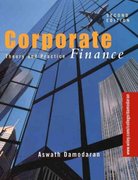Question
Franconia Notch Case Scenario (50 points) Mark Whitney, CFA, is the Chief Investment Officer of Granite State Partners, a fixed income investment boutique serving institutional
- Franconia Notch Case Scenario (50 points)
Mark Whitney, CFA, is the Chief Investment Officer of Granite State Partners, a fixed income investment boutique serving institutional pension funds. Paula Norris, a partner at consulting firm Franconia Notch Associates, is conducting due diligence of Granites capabilities. At a meeting they go over a presentation Whitney has prepared.
The first page of the presentation addresses Granites investment style for managing portfolios. It states:
Granite adjusts the portfolios duration slightly from the benchmark, and attempts to increase relative return by tilting the portfolios in terms of sector weights, varying the quality of issues, and anticipating changes in term structure. The mismatches are expected to provide additional returns to cover administrative and management costs.
Norris asks Whitney about Granites ability to successfully reflect, in its portfolios, its views on the market and the direction of interest rates. Whitney makes the following statements:
Statement 1 Granite uses effective duration to measure the sensitivity of the portfolios price to a relatively small parallel shift in interest rates. For large parallel changes in interest rates, we make a convexity adjustment to improve the accuracy of the estimated price change. We believe that parallel shifts in the yield curve are relatively rare; therefore, duration by itself is inadequate to capture the full effect of changes in interest rates.
Statement 2 We address yield curve risk by using key rate durations. When using this method, we stress the spot rates for all points along the yield curve simultaneously. By changing the spot rates across maturities, we are able to measure a portfolios sensitivity to those changes.
Statement 3 We also measure spread duration contribution. This analysis is not related to interest rate risk. This measure describes how securities such as corporate bonds or mortgages will change in price as a result of the widening or narrowing of the spread to Treasuries.
Norris provides information on three clients she might refer to Whitney for portfolio management services, and asks him to design a dedication strategy for each. Whitney makes the following recommendations:
Client 1: This bank has sold a five-year guaranteed investment contract that guaranties an interest rate of 5.00% per year. I would purchase a bond with a target yield of 5.00% maturing in 5 years. Regardless of the direction of rates, the guaranteed value is achieved.
Client 2: The defined benefit pension plan for this client has an economic surplus of zero. In order to meet the liabilities for this plan, I will construct the portfolio duration to be equal that of the liabilities. In addition, I will have the portfolio payments be less dispersed in time than the liabilities.
Client 3: This clients long-term medical benefits plan has known outflows over 10 years. Because perfect matching is not possible, I propose a minimum immunization risk approach, which is superior to the sophisticated linear program model used in the current cash flow matching strategy.
Norris asks Whitney what steps he takes to reestablish the dollar duration of a portfolio to the desired level in an asset-liability matching (ALM) application. Whitney responds: First, I calculate a new dollar duration for the portfolio after moving forward in time and shifting the yield curve. Second, I calculate the rebalancing ratio by dividing the original dollar duration by the new dollar duration and subtracting one to get a percentage change. Third, I multiply the new market value of the portfolio by the desired percentage change from step two.
Norris then asks Whitney, What sectors are you currently recommending for client portfolios? Whitney responds: I recommend investing 25% of the portfolio in mortgage-backed securities because they are trading at attractive valuations. I will not however buy floating rate securities because these do not hedge liabilities appropriately.
Norris asks how changing market conditions lead to secondary market trading in Granites client portfolios. Whitney responds: Our research teams run models to assess relative value across fixed-income sectors which, combined with our economic outlook, leads to trade ideas. For example, currently our macroeconomic team is concerned about the situations in several sovereign nations and the spillover effect to capital markets. These issues range from geopolitical risks that will likely increase the price of oil to outright sovereign defaults or restructuring.
- Comment on Statement 1 from Whitney
- Comment on Client 1s comment above about the bank guaranteed contract.
- Comment/discuss on client 2s comment about duration hedging and less dispersed payment on hedging outcomes.
- Search online (google it) about Mortgage-backed securities
- The risk level of MBS
- briefly illustrate what different tranches mean and how are they rated by rating agencies. Why the ratings they receive are different from bond ratings.
Step by Step Solution
There are 3 Steps involved in it
Step: 1

Get Instant Access to Expert-Tailored Solutions
See step-by-step solutions with expert insights and AI powered tools for academic success
Step: 2

Step: 3

Ace Your Homework with AI
Get the answers you need in no time with our AI-driven, step-by-step assistance
Get Started


